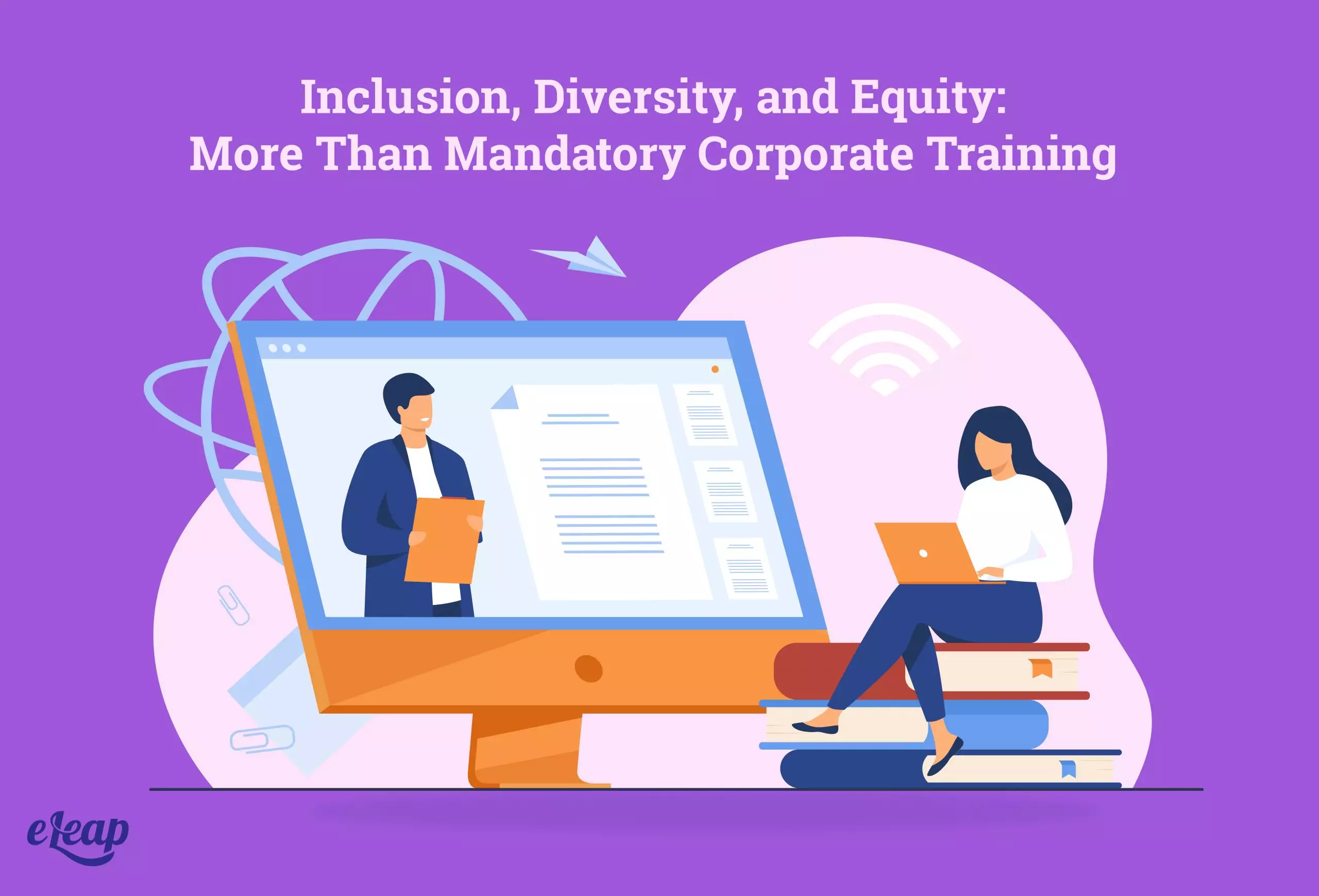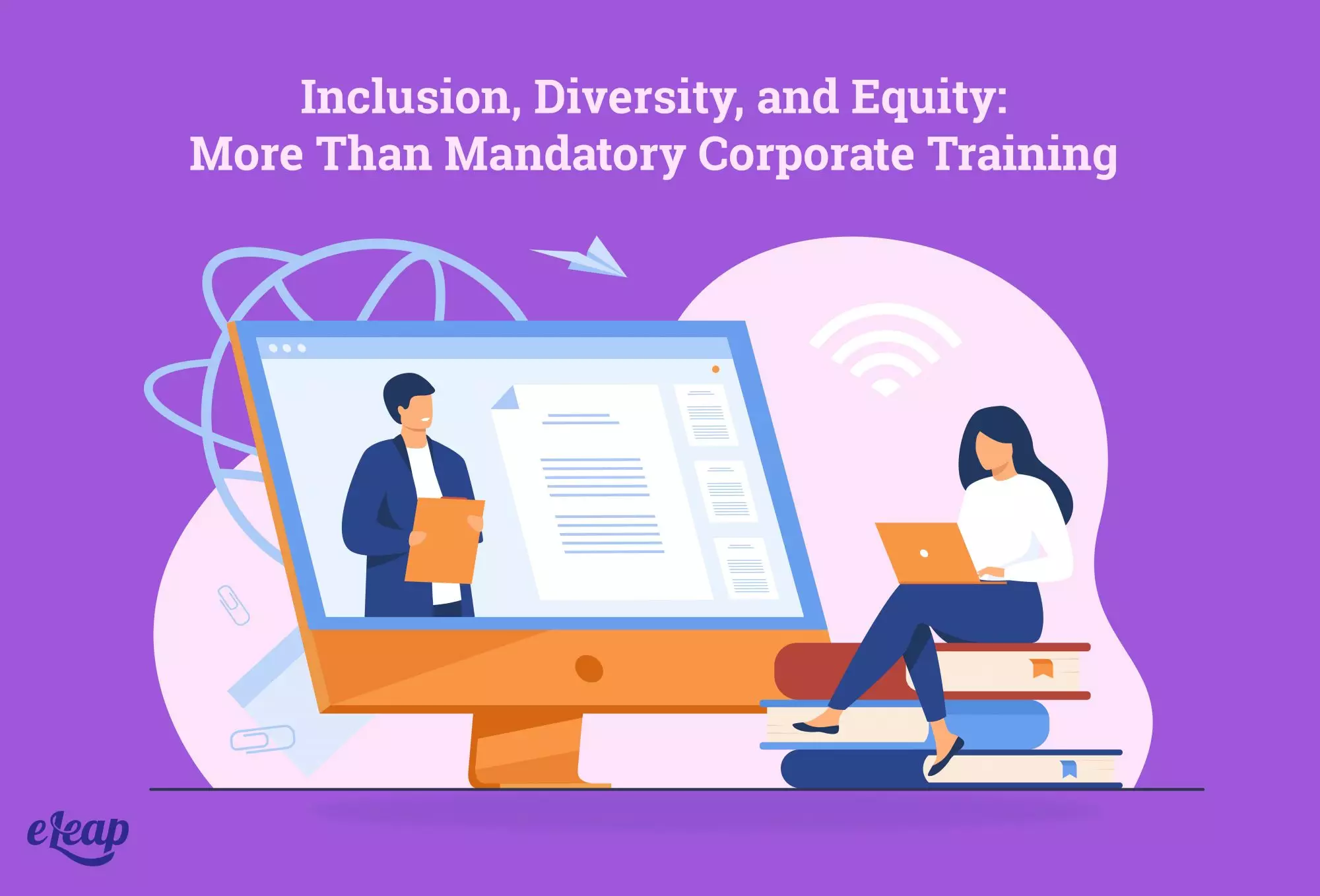Inclusion, Diversity, and Equity: More Than Mandatory Corporate Training

Chances are good that when you think about concepts like “inclusion”, “diversity”, and “equity” in the workplace, you immediately go to mandatory corporate training. That’s natural. It’s been hammered into us for decades at this point. However, those concepts need to be more than just text on a computer screen. They need to be more than just three modules in your LMS.
It’s important that you make those three ideas part of the very foundation of your corporate culture. How, though? It can be more challenging than you think, but with an intentional stance, compassionate approach, and dedication, you can do it.

Let’s Define Those Concepts
Before we dive too deep into things, let’s take a moment to break these concepts down. They’re more than mere buzzwords, but because they get bandied about so frequently, many people fail to understand what they mean or their incredible impact in the workplace.
- Inclusion: Inclusion is simple – it refers to everyone in your business feeling like they’re part of the group. How do you do that when you have people from different cultural backgrounds, different ethnicities, different religious beliefs, and more? It’s perhaps the hardest to institute in a business because it doesn’t stem directly from diversity. In point of fact, it’s very possible (easy, even) to have a diverse but not inclusive team.
- Diversity: This is another simple concept – diversity just means that your workforce isn’t homogenous. You have people from different cultures, races, and ethnicities in your business. You have different religions and moralities represented. You employ people from different social backgrounds and levels, too. A diverse workplace is the foundation for things like mutual understanding, tolerance, and respect.
- Equity: This one is a harder concept to understand because too many people confuse it with equality. Really, equity is nothing more than ensuring everyone has access to the same resources, tools, and opportunities as everyone else.
Think of it this way: you have three people standing around an apple tree. All three want to pick some delicious apples, but two of them cannot reach the branches. Equality would be giving each of them an identically-sized ladder.
However, what if one of those people still cannot reach? Equality would say that you’ve done enough, but the truth is that the playing field still isn’t even. Equity is giving each person a ladder tall enough to ensure that they can reach the apples.
Why Do These Qualities Matter, Though?
Sure, inclusion seems like a “nice” idea. Equity and diversity seem fine. However, how do they fit into the world of business? Don’t those qualities harm your ability to push forward and dominate the competition? Don’t they lead to a company helmed by people who want participation trophies for everything?
No, and no. The truth is that if you’re able to bake diversity, inclusion, and equity into your company culture, you’ll be better positioned for growth, success, and profitability over the long term. Consider the following:
- One study found that diverse teams were not only more motivated but more innovative and able to make better decisions.
- Companies with more diverse workforces see significantly improved satisfaction and morale levels throughout the organization, and also enjoy higher levels of trust.
- McKinsey & Co. found that more diversity in the workplace encouraged employees to perform better, not just initially, but at sustained levels over time.
- Management diversity leads to an almost 40% increase in revenue generation as compared to companies with homogenous management teams.
- Diverse teams are better able to understand their target customers, which informs their messaging, interaction, and support at all touchpoints.
How Do You Embed These Qualities in Your Culture?
Now that you can see the value of including diversity, inclusion, and equity in your company culture, the question becomes how to do it. There are several key elements to see success. We’ll explore them below.
- Training: This is probably a no-brainer, but you need to include content on diversity, inclusion, and equity in the training materials on your LMS. However, break out of the mold here. Don’t make them just part of your mandatory corporate training.
Include them in your onboarding process, make them central to promotion-related training, and include these qualities in career-path development and upskilling. It’s also important that you do more than just offer text-based learning. Consider adding gamified content surrounding these topics that help your learners not just develop these skills, but put them into action.
- Ensure They’re Present at the Top: Your company culture begins not with the attitudes of your employees, but with the values, ethics, and behaviors of your leaders. Make sure that they practice inclusion and equity, and that they value diversity, too. When your teams see these values put into action every day from their managers and other leaders, it becomes easier for them to see the value and put them into action in their own roles.
- Structure Your Company Correctly: Finally, make sure you’re structuring your company correctly. You cannot preach diversity and then fail to implement it. Your leadership should be diverse, your teams should be diverse, and your workforce should be diverse.
Of course, diversity is just the first step, and it doesn’t naturally lead to equity or inclusion. It’s all too possible for people from one culture to not be inclusive of someone from another one. Find ways to practice inclusion and show equity at work every single day.
Creating a Thriving Organization
It’s important to understand that while baking inclusion, diversity, and equity into your culture is critical to success, it’s not something that will happen overnight. It’s also not something you can do once and then forget about it. There is no autopilot here.
Success requires intentionality, strategy, and implementation. Then you need to rinse and repeat. With time, passion, and dedication to creating a place that people love to work, you’ll create an amazing culture.